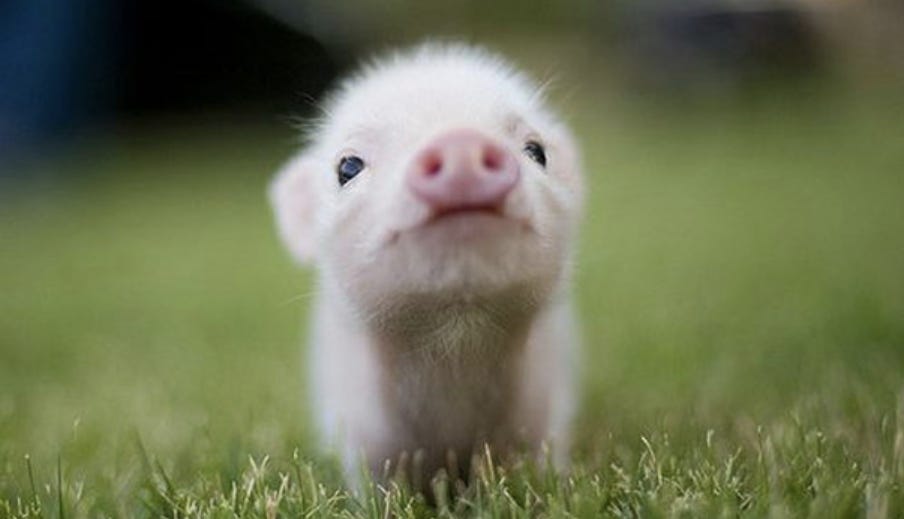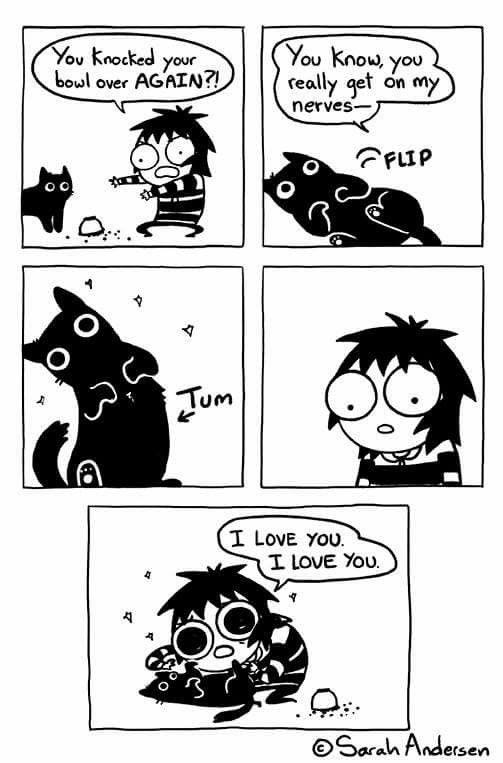
This week has been something else, so I’ve decided to turn my attention to something more pleasant — cute things.
It’s been scientifically proven that cute things affect us in powerful ways. Cute images hijack our brains and change our moods, our perceptions, and even our behaviors without us realizing it. Underneath its cute veneer, cuteness can bring pleasure, allow manipulation, or even trigger a primal aggression.
So, let’s snuggle the closest kitten, load up on the baby animal memes, and get our brains ready to explore the good, the bad, and the weird of cute things.
Acute Cuteness
Let’s start our exploration of cute things by taking a close look at the word cute. We know what it means, right? It’s kittens and piglets and little hearts and… oh wait, Merriam-Webster wants to jump in and remind us that the word cute actually has a number of meanings.
In fact, it’s origins come from a darker, less cute word — but thanks to good old semantic change, our common understanding of cute has evolved to more closely match definition number two which we will now call good cute.
Good Cute
Research has shown that cute things are good for our brains and may potentially make us better people. The University of Oxford tells us, “Cuteness may help to facilitate well-being and complex social relationships by activating brain networks associated with emotion and pleasure and triggering empathy and compassion.”
Cute things may even make us better workers by making us more focused, present, and attentive.
We’re wired as humans to pay more attention to cute things and nature knows this. That’s why things that are vulnerable and require our care get our brain’s full attention. Babies with their big eyes and chubby faces jump right to the front of our brain’s queue.
Waiiiiiit, if we’re wired to respond positively to cute things without even knowing it, doesn’t that mean that we can be manipulated via cuteness? YES, which is why we will now call this next aspect of cuteness, bad cute.
Bad Cute

Babies are nature’s best manipulators — and for good reason, the survival of the human race depends on their ability to trick us into caring for them.
Since humans are born entirely dependent on others for their care, human brains are hardwired to provide that care — which may in fact be the origin of why we find things cute to begin with. Cute = attention = care = survival.
Babies aren’t the only ones toying with us. Nature put puppies up to it too. According to The Atlantic, “Peak cuteness, then, is no accident—at exactly the moment when our intervention matters most, puppies become irresistible to us.”
I’m sure you’re thinking, okay Ava, but none of that sounds that bad, really, babies and puppies are great. Sure, but bad cute has two issues. First, companies know we’re wired to pay attention to cute things and use them with great success in marketing campaigns. Cute engineering is a growing field and helps humans bond to commercial products.
Second, if cuteness is why we care for things that need us, what happens when those things aren’t cute enough? Cuteness discrimination is real and can adversely affect the care and adoption rates of babies with facial abnormalities or who are simply less cute.
Weird Cute
So, all this talk about good cute and bad cute should be the end of it, right? Nope. There’s another part of cuteness that we will call weird cute.
Have you ever see something SO ugly that it was somehow cute? That’s what Japanese cuteness researchers (yes, they exist) call kimo-kawaii or gross cute.
It’s weird, right? But, not as weird as the concept known as cute aggression which explains why some humans want to squeeze, bite, eat or even hurt cute things.
“Scientists suspect that cute aggression is the brain’s way of coping… to temper the onslaught of positive feelings, the brain tosses in a dash of aggression.”
Ohhh, so since we need to actually care for cute things, our brains make us want to hurt cute things just a little bit in order to keep us from being hypnotized into inaction. Nice weird plan there, brain.
Okay, so there we have it. Cuteness is good, but also bad, but also weird — just like these baby platypuses, which are cutely known as puggles. Don’t EAT them, okay?
Until next time,
Ava
If you enjoy The Short Story, let me know!
Also, if there’s something that you’d love to see featured in a future edition, send it my way — I’m excited to share your work here in The Short Story or on my podcast, Stories Found.
Send submissions to: avalovehanna@gmail.com
Want to hang out some more?
FOLLOW: I tweet stuff - @RobotsControlMe
READ: website - AvaLoveHanna.com
LISTEN: comedy/storytelling podcast - STORIES FOUND














The acute cute piglet ☺️ Love all of this!